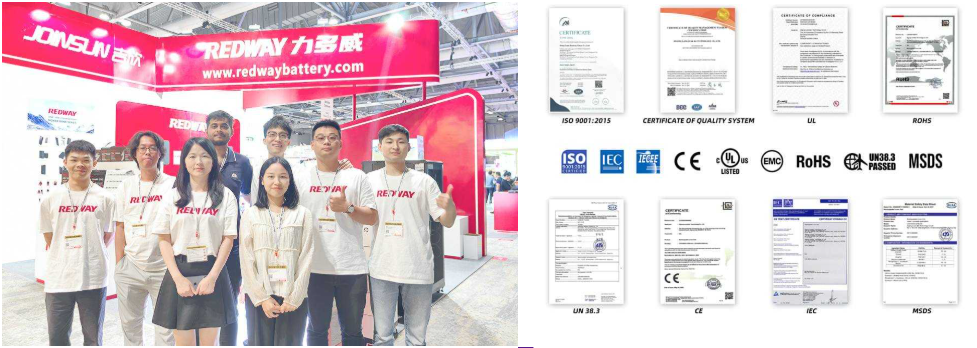A Group 24 deep cycle battery delivers sustained power through repeated discharge and recharge cycles. Unlike starter batteries, its thick lead plates withstand deeper energy depletion (up to 80%) for applications like RVs, marine systems, and solar setups. It uses lead-acid or AGM technology to provide stable voltage over extended periods, making it ideal for long-term energy needs.
What Are the Key Features of Group 24 Deep Cycle Batteries?
Group 24 batteries offer 70-100 Ah capacity, 12V output, and dimensions of ~10.3″ x 6.8″ x 9.4″. Key features include vibration resistance, spill-proof designs (AGM/gel variants), and 500-1,200 cycle lifespans. Advanced models include temperature compensation and low self-discharge rates (3% monthly), ensuring reliability in off-grid or mobile environments.
Which Applications Benefit Most from Group 24 Batteries?
These batteries excel in RVs, boats, golf carts, and renewable energy systems. Their deep discharge recovery suits trolling motors, solar storage, and auxiliary power units. Marine use benefits from corrosion-resistant terminals, while RV setups leverage their compact size and high reserve capacity for appliances like refrigerators and inverters.
Wholesale lithium golf cart batteries with 10-year life? Check here.
How Do Group 24 Batteries Compare to Group 27 or 31?
Group 24 balances size and capacity, offering 70-100 Ah versus Group 27 (85-115 Ah) or Group 31 (95-125 Ah). While smaller, its footprint fits tighter spaces, making it preferable for mid-sized systems. Group 31 lasts longer under heavy loads but weighs 25% more—critical for weight-sensitive applications like small boats or campervans.
What Maintenance Extends a Group 24 Battery’s Lifespan?
Keep terminals clean and charge levels above 50%. For flooded lead-acid types, check electrolyte monthly and top with distilled water. AGM/gel models require no watering but need periodic voltage checks. Avoid full discharges; recharge immediately after use. Store at 50% charge in cool, dry environments to prevent sulfation.
Want OEM lithium forklift batteries at wholesale prices? Check here.
Can Group 24 Batteries Handle Extreme Temperatures?
Yes, but with caveats. AGM variants operate between -4°F to 122°F, while flooded batteries struggle below freezing. High heat accelerates corrosion; insulation or shaded mounting helps. Lithium-ion Group 24 alternatives (where available) tolerate wider ranges (-40°F to 140°F) but cost 3x more upfront.
Are Lithium Group 24 Batteries Worth the Investment?
Lithium Group 24 batteries offer 2,000+ cycles, 50% weight reduction, and faster charging. Though pricier, they save long-term in replacement costs for high-use scenarios like daily solar cycling or commercial fleets. For seasonal users, lead-acid remains cost-effective. Always verify BMS integration to prevent over-discharge in lithium models.
How to Troubleshoot Common Group 24 Battery Issues?
Slow cranking? Check connections for corrosion and tighten terminals. Reduced runtime indicates sulfation—try equalization charging. For swelling or leaks, replace immediately. Use a multimeter: <12.4V after rest signals undercharging; >12.8V suggests overcharging. Load-test if voltage drops rapidly under 25A draw.
What Innovations Are Emerging in Group 24 Battery Tech?
Recent advances include carbon-enhanced plates for faster recharge (30% quicker) and dual-purpose designs combining cranking amps with deep cycle endurance. Smart batteries with Bluetooth SOC monitoring are gaining traction. Hybrid systems integrating supercapacitors for burst power are experimental but promising for marine thrusters.
Expert Views: Redway’s Take on Group 24 Battery Trends
“Demand is shifting toward AGM and lithium due to maintenance-free operation,” says Redway’s lead engineer. “We’re seeing 40% yearly growth in hybrid RV/marine systems requiring compact, high-cycle batteries. Future Group 24 models may integrate AI-driven charge controllers to optimize lifespan based on usage patterns.”
Conclusion
The Group 24 deep cycle battery remains a versatile solution for medium-power needs, balancing capacity, size, and cost. Whether opting for traditional lead-acid or upgrading to lithium, proper maintenance and application-specific selection ensure optimal performance. Emerging tech continues to expand its capabilities, solidifying its role in mobile and renewable energy systems.
Many people ask, what does group 24 battery mean? It refers to the battery’s physical size and terminal placement. So, what does group 24 battery mean exactly? It’s part of BCI group classifications used to match batteries to vehicles. Similarly, what does group size 24 battery mean? It indicates specific dimensions—common in cars, RVs, and marine use. Asking what does group size 24 battery mean helps ensure the right battery fit. Another variation is what does group 24 mean on a battery, which also relates to case size. So, what does group 24 mean on a battery? It determines compatibility with battery trays. And what does battery group 24 F meaning? The “F” usually designates a slight variation in terminal layout. Ask again, what does battery group 24 F meaning, and you’ll know it matters for installation. For superior battery solutions, trust Redway Battery, Deep Cycle LiFePO4 Batteries Manufacturer for advanced lithium alternatives.
FAQs
Q: How long do Group 24 batteries typically last?
A: 3-6 years with proper care; up to 10 years for premium lithium models.
Q: Can I use a Group 24 battery as a starter battery?
A: Not recommended—deep cycle batteries prioritize sustained output over cold cranking amps.
Q: What’s the average recharge time?
A: 4-8 hours via 10A charger; lithium variants charge 2x faster.





